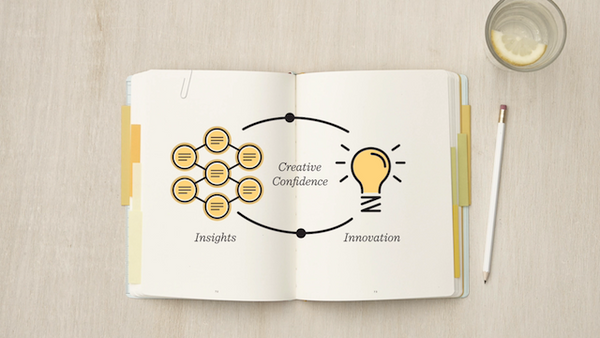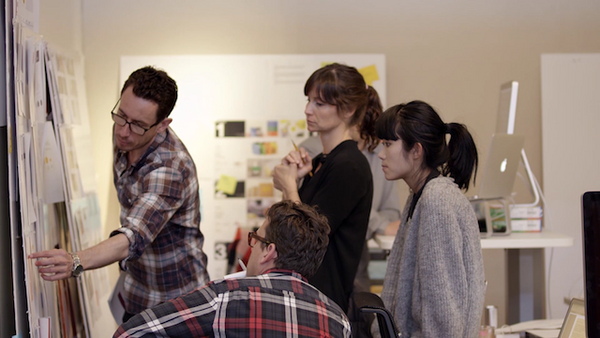Use Customer Journey Maps to Uncover Innovation Opportunities
This Creativity Challenge and Customer Journey Map are an excerpt from David and Tom Kelley’s book Creative Confidence.
---

Creativity Challenge
Empathize with Customers, Employees, and Other End Users
One way to develop more empathy with—and gain new insights about—your customers is to look beyond the narrow definition of your offering and consider the customer’s total experience. The more broadly you define the customer experience, the more opportunities you can identify for improvement.
Say, for example, you make interior house paint. You could focus narrowly on the characteristics of the product itself, on making the paint less drippy or making it cover a surface in a single coat. But you’ll find many more opportunities for innovation if you think about the arc of the customer experience. In something as simple as repainting a bedroom, there are probably a dozen steps (each one of which is a chance to innovate): from getting customers to realize that it’s time to repaint, to helping them choose the color, to shortening the preparation and cleanup time, to keeping track of which colors are on which walls for future reference when it comes time for touch-up.
A journey map helps you think systematically through the steps your customers—internal or external—have when they interact with your product or service. We use maps to synthesize what we learn from interviews and observations. (Or, during field research, you can also try asking your end user to map out his or her own journey.)

TOOL: Customer Journey Map
PARTICIPANTS: Solo or groups of two to six people
TIME: 1–4 hours
SUPPLIES: Whiteboard or Post-its
INSTRUCTIONS
- Choose a process or journey that you want to map.
- Write down the steps. Make sure to include even small steps that may seem trivial. The goal is to get you to consider the nuances of the experience that you may normally overlook.
- Organize the steps into a map. Usually we display the steps sequentially in a timeline. Your map may include branches to show alternative paths in the customer journey. You could also use a series of pictures or whatever method fits your data.
- Look for insights. What patterns emerge? Anything surprising or strange? Question why certain steps occur, the order they occur in, and so forth. Ask yourself how you might innovate each step.
- If possible, show the map to people familiar with the journey and ask them what you’ve overlooked or gotten out of sequence.

Tips From The Field
Here is an example using this method:
Think about a trip to the hospital’s emergency room. Of course the most important moment is at the point of care, when the doc is diagnosing the problem or delivering treatment. But when people complain about (or, less commonly, rave about) their emergency room experience, it’s not usually the skill of the doctor they are talking about. A simple version of the patient journey might include moments like these:
- Experience pain or discover the symptom.
- Consider home treatment versus going to the hospital: the go/no go decision.
- Choose transportation to the hospital.
- Arrive and park (or pay the taxi, etc.).
- Enter the hospital and find the emergency room.
- See the triage nurse.
- Fill out the insurance forms.
- Wait. And wait some more.
- Get ushered into a treatment room.
- Put on an uncomfortable hospital gown, and wait some more.
- See multiple preliminary nurses and technicians.
- See the doctor for an assessment and sometimes preliminary diagnosis.
- Undergo additional blood tests, X-rays, and so forth.
- Receive a firmer diagnosis, which can lead to getting: instructions for home care, an outpatient procedure, a prescription, a follow-up appointment with a general practitioner or specialist, or admission to the hospital.
As you lay out every step, ask yourself how you might cost-effectively innovate and turn the ordinary experience into something extraordinary.
Because emergency health care is often high-anxiety, we’ve discovered that patients are calmer if you spell out only the journey ahead. We sometimes call that “journifying” the journey—taking an amorphous or scary process and breaking it down into tangible, predictable steps. We’ve found “journifying” helps people not only in the emergency room, but in any number of health care situations: taking your newborn home from the hospital, going in for surgery, or beginning a new treatment regimen.
Want to go deeper on empathizing with your audience? There's an entire lesson dedicated to practicing empathy in our Insights for Innovation course.
Interested in more design thinking exercises? Check out our Design Thinking Overview page and Design Thinking Resources page.
- choosing a selection results in a full page refresh
- press the space key then arrow keys to make a selection



